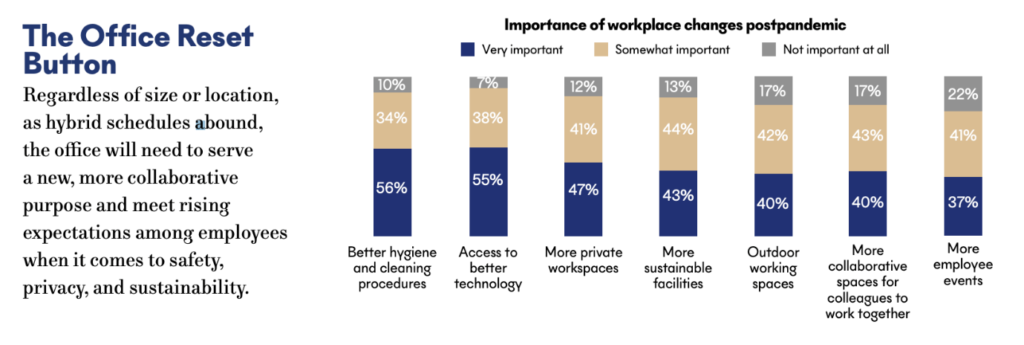Reprioritizing: What Does Life and Home Look Like Post-Covid?
A new report from The Brand Guild and research firm Lucid suggests the lifestyle changes ushered in by Covid-19 may be reshaping American life on a more permanent basis, especially in terms of how and where we choose to live.
The report is based on an online survey, which elicited responses from a representative sample of 1,000 Americans, with a focus on “four markets that are hotbeds for real estate innovation”, namely New York City, Washington D.C., Miami, and Houston. In addition, they write, they brought in commentary from “interviewing some of the top real estate developers, workplace thought leaders, and consumer brands” to create a “better picture of how living, working, and playing will change in a post-pandemic world”.
The full report is online here, but some key highlights are detailed below. This is of particular interest and value to those of us in real estate generally, and commercial real estate (CRE) specifically, as it will help inform planning, development, and investment choices going forward.
A reordering of priorities
Arguably the top finding of the study is the de-prioritization of work in our lives, or as the report authors call it “The Great American Shakeup”. That’s not to say that it isn’t a priority for Americans, but that it has shifted down somewhat in the rankings from “live, work, play” to “live, play, work”, which the report authors suggest means “business[es] … need to meet consumers where they are”.

Source
“Health, wellness, and particularly mental health came to the fore. The trappings of work-first daily life were called into question…”. “Back in pre-COVID times,” reads the report, “nearly 1 in 3 Americans ranked work as the most important aspect of their lives. As the pandemic subsides in the U.S., it’s now closer to 1 in 4 Americans.”
Moving on and getting flexible
Half of those surveyed said they were considering moving to a new area, and as many as 82% were eyeing the suburbs over the cities.
Over half (52%) of survey respondents also said they were considering and willing to take a longer commute to work, “in order to work from home a few days a week”.

Source
Bye-bye open plan
Almost two-thirds of respondents (65%) were predicting that “open offices will be a thing of the past”, and 86% hope that “outdoor dining remains as popular post-pandemic as it is now”. Features like contactless service and walk-up windows for takeout could really set a dining and grocery site apart.
In terms of our workplaces, hybridity is the keyword, with more and more people expecting workplaces to meet their needs, and not the other way round, as well as offering workers more outdoor and private spaces, better cleaning, and better access to tech.
The simple “would you rather?” rubric below is particularly for CRE professionals in the development planning or marketing phases, as it can be used to aligned decision-makers on the strategic needs of such projects.

Source
Green and good
Another leading trend factor, according to the report, is the buying power of Gen Z and their strong preference for sustainability. Four out of five (80%) “consider sustainability an important factor in deciding on purchasing or renting their next home”.
Takeout for CRE
This is just one report and should be viewed in the context of other findings, but they are the kind of granular insights that should be worked into a strategic assessment of sites and of development plans – with CRE professionals asking themselves “Does this fit with the kind of life the target market of this development envisions?”